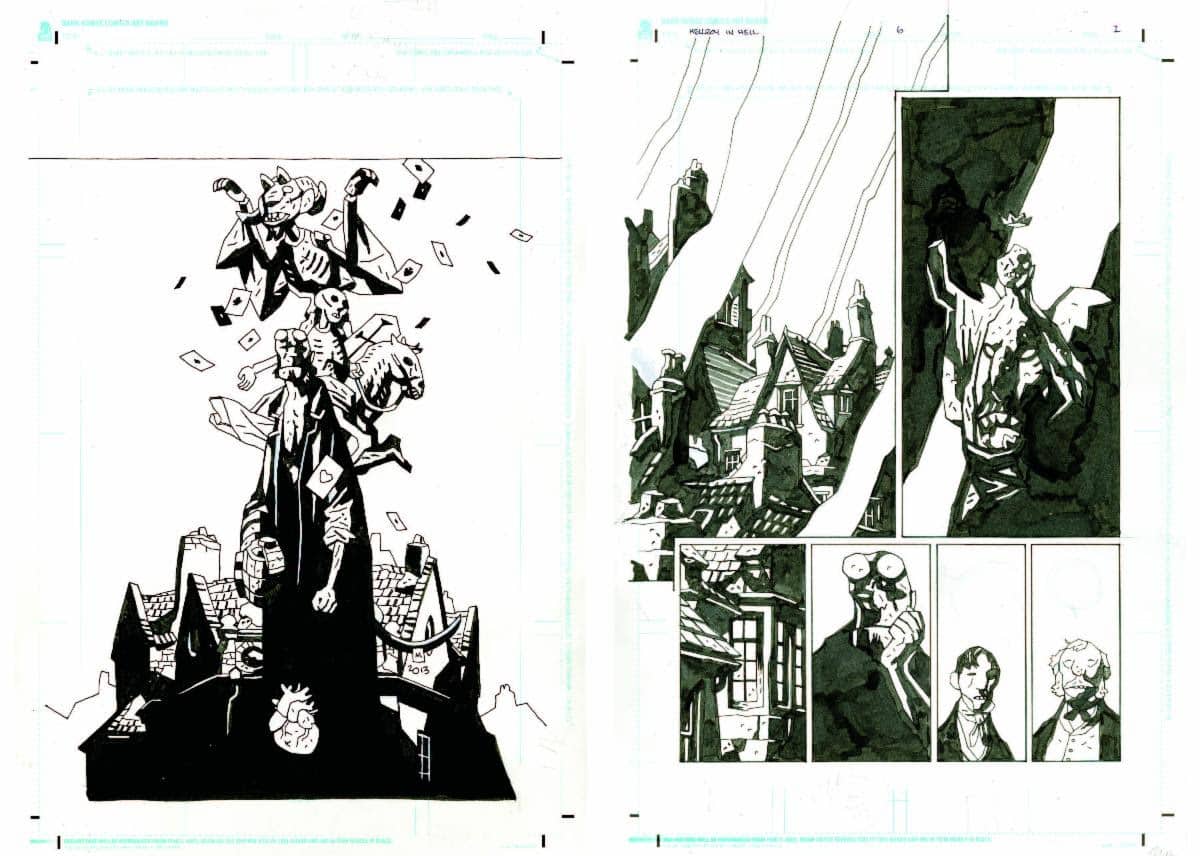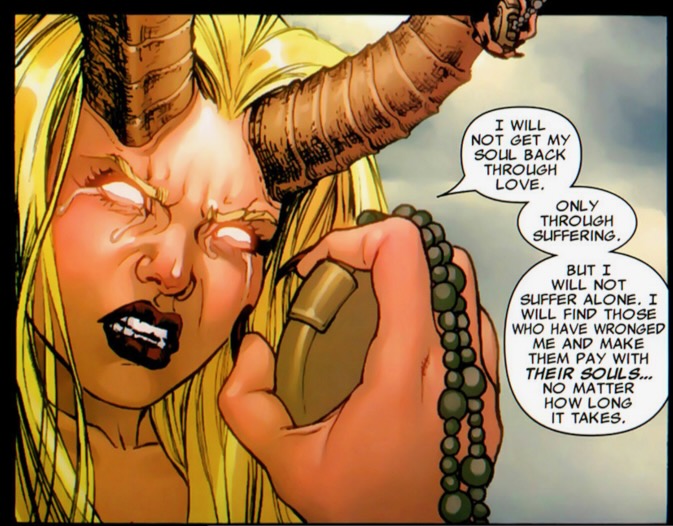 Rock is a Lady’s Modesty Volume 1
Rock is a Lady’s Modesty Volume 1
Writer & Artist: Hiroshi Fukuda
Publisher: Yen Press (print & digital)
Translation: Ajani A. Oloye
Lettering: Phil Christie
Publication Date: Sep 23, 2025
Rating: Teen
Genre: Manga (JPN), Slice-of-Life, Comedy
Hiroshi Fukuda‘s English language debut, Rock is a Lady’s Modesty, is finally out from Yen Press! This time, the anime adaptation arrived earlier than the source material and it was a part of the Spring 2025 lineup, available on HIDIVE. It hasn’t been long since the season wrapped up, and whether you tuned into the anime or you’re only hearing about it now, here’s an introduction to the first volume, by someone who’s completely new to the series!
 No offense! @Yen Press, 2025
No offense! @Yen Press, 2025One girl is not like the others, but she’s blended in so masterfully that you won’t be able to tell. Lilisa Suzumiya is hard at work, aiming to be the Noble Maiden, the highest honor the top student receives in Oushin Girls’ Academy. To Lilisa, the only way to make her mom (who married into high society) happy and honor the established Suzumiya family name is to abandon her “commoner” life from before. If that means throwing away her love for rock music, giving up playing the guitar and posing as a bona-fide princess at school, so be it.
However, her conviction is put to the test when the current top student and an idol among the first years, Otoha, drops a guitar pick when she bumps into Lilisa. Lilisa knows better than to give it back in front of prying eyes. When she follows Otoha to an unused building within the campus, she’s shocked to her core to see The Number 1, the very embodiment of perfection, blasting away on the drum set in front of her, accompanying a song in perfect sync, a song Lilisa knows by heart.
 Expectation… @Yen Press, 2025
Expectation… @Yen Press, 2025 Reality… @Yen Press, 2025
Reality… @Yen Press, 2025Rock is a Lady’s Modesty‘s first volume is an energetic, flashy and fun introduction. The central clash is between Lilisa, who’s desperate to fit in and prove that she’s deserving of her step-father’s recognition and love, and Otoha, who’s a natural-born noble. She’s tall and slender but also well-endowed, with long, silky raven-black hair. She moves with elegance, enchanting everyone she graces with her presence.
It’s no wonder Lilisa looks at Otoha with a wide-eyed curiosity. But seeing her behind the drums, face slick with sweat, limbs moving frantically but with great precision, negates everything that Lilisa came to believe about her and how a lady aspiring to be a Noble Maiden should act.
For Lilisa, Otoha represents her childlike wonder, her interest that borders on obsession towards music (specifically towards guitar) and a joy that shakes her to the core— all the things she had to abandon to fit herself into the mold of her mother’s new marriage. Lilisa can’t reconcile the reality of how Otoha can easily embrace these contradictory modes of being simultaneously, effortlessly.
 @Yen Press, 2025
@Yen Press, 2025Of course, Otoha has to keep her drumming under wraps as well, as all the girls are under strict supervision and constant evaluation. But her unabashed embrace of rock and drums threatens everything Lilisa wants to achieve. I’d argue that because she’s born into nobility, it’s much less risky for her to lead this double life and accept herself compared to Lilisa.
We accompany Lilisa as she tries to stand her ground and keep her eyes on the goal. However, it’s immediately obvious to the reader how she scrambles to find petty excuses just so she can return to the abandoned room Otoha is using as a studio. As for Otoha, we don’t have as much insight as Lilisa into her yet, aside from how influential her family is and her devotion to music.
 @Yen Press, 2025
@Yen Press, 2025When the anime adaptation of Marimo Ragawa’s Those Snow White Notes was airing in 2021, I wrote a post, musing about the relationship between music and manga, where the former is all about rhythm, tonality, melody and silence, while the latter ultimately consists of still images on paper. Certain creators, such as Thanat, emphasize the importance of rhythm in manga in relation to the narrative flow, which can be considered relatively similar to music. Still, music as a manga genre can be tricky.
I’d divide music manga into two main categories: those that depict non-existent songs, such as Given, and those that incorporate pieces that were already composed by musicians, such as Nodame Cantabile. While a group or an orchestra’s rendition of an existing song can vary, it’s still possible for the reader to have an idea about the sound and the mood of a song, whereas there’s no way to guess at the musicality of an original song by simply looking at the page. One might argue that music in manga is merely a tool and what matters is the emotions the creator wants to convey. To me, however, not knowing the song leaves something to be desired.
Rock is a Lady’s Modesty chooses the second route and includes songs from two groups: Lite’s “Ghost Dance”, and Mudy on the Sakuban’s “Youth”. When I visited YouTube to give these songs a spin, seeing so many comments along the lines of “Rock is a Lady’s Modesty brought me here” made me chuckle. It’s nice to see a manga connecting our today with pieces that were released years ago! Also, listening to the actual songs while reading the volume certainly adds to the experience.
However, the aspect that does the heavy lifting is, of course, Hiroshi Fukuda’s exaggerated, dynamic panels. When performing, Otoha and Lilisa’s distorted bodies and the interesting angles Fukuda chooses to portray these young women in their element convey the vitality, joy and love they have for the medium. I haven’t seen the anime adaptation yet, but I’m curious about whether (or how) that energy translated onto the screen.
Rock is a Lady’s Modesty, judging from this volume, doesn’t reinvent the wheel. I can already guess what kind of conflicts and plot beats to expect. Lilisa fighting for recognition/acceptance from her family, us getting to know Otoha and the other members they’ll recruit, group shenanigans and their journey to perform as one lies ahead.
Moreover, I wasn’t very fond of certain panels, such as a close-up on Otoha’s crotch while they’re stretching during P.E., or the sexual innuendos similar to the ones you see on chocolate or ice cream ads, where the excitement one feels from eating is portrayed as if what the person’s feeling is sexual pleasure. They don’t dominate the narrative, but they weren’t as sparse and easy to ignore either.
These instances affected my reading experience and I decided that this series wasn’t a good fit for me. However, if you don’t mind the kind of depictions I mentioned above, you’re a music nerd, or reading about young girls that come together over a shared interest is your cup of tea, Rock is a Lady’s Modesty would be a good series to give a chance to!
 @Yen Press, 2025
@Yen Press, 2025Rock is a Lady’s Modesty Volume 1 by Hiroshi Fukuda is available digitally and in print on Yen Press’ website and other retailers.


 Rock is a Lady’s Modesty Volume 1
Rock is a Lady’s Modesty Volume 1



















 English (US) ·
English (US) ·